Overall, 2012 was a good year for ducks.
The 2012 duck population in North America was estimated at 48.6 million birds by the U.S. Fish and Wildlife Service — roughly a 7-percent increase from 2011 and a 43-percent increase over the long-term average. Add in wood ducks, mergansers, scoters, eiders, and long-tailed ducks, which are excluded from the estimate because their breeding ranges are outside the survey area, and the duck numbers would be even higher.
In its “Trends in Duck Breeding Populations” report, the Fish and Wildlife Service estimates the health of duck populations across the United States and Canada each year and provides data on long-term trends. The report dates back to 1955. Duck species surveyed include mallards, northern pintails, blue-winged teals, green-winged teals, American wigeon, gadwalls, scaup, northern shovelers, redheads, and canvasbacks.
The 2012 survey results imply that the waterfowl conservation battle has been won. Duck populations are at a record high. Many species have doubled or even tripled their numbers. The recovery of these species demonstrates that effective conservation efforts can dramatically increase wildlife populations in a relatively short amount of time.
However, not all species of waterfowl have enjoyed that same level of success. In fact, despite conservation efforts, some duck species have struggled to maintain even their 1955 population levels. Why is this — and what does it mean for the future of duck conservation?
Hunters Fund Habitat Conservation
America’s hunters have funded conservation of a variety of native wildlife species, many of which — including whitetail deer, pronghorn antelope, and wild turkey — were once near extinction.
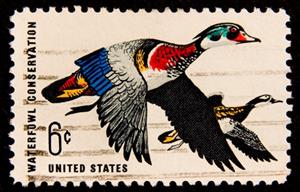 In the early 20th century, market hunting of birds and a series of droughts devastated migratory waterfowl populations. Sportsmen initiated two programs to fund habitat restoration, and the Izaak Walton League was actively involved in developing both programs. The first is the Duck Stamp Program, created in 1934 to fund the purchase of waterfowl habitat. To date, annual Duck Stamp sales have generated more than $750 million, which has been used to purchase or lease more than 6 million acres of wetland habitat and protect it as part of the National Wildlife Refuge System. These lands benefit not only migratory waterfowl but hundreds of nongame birds and other wildlife too.
In the early 20th century, market hunting of birds and a series of droughts devastated migratory waterfowl populations. Sportsmen initiated two programs to fund habitat restoration, and the Izaak Walton League was actively involved in developing both programs. The first is the Duck Stamp Program, created in 1934 to fund the purchase of waterfowl habitat. To date, annual Duck Stamp sales have generated more than $750 million, which has been used to purchase or lease more than 6 million acres of wetland habitat and protect it as part of the National Wildlife Refuge System. These lands benefit not only migratory waterfowl but hundreds of nongame birds and other wildlife too.
The second program, created by the Federal Aid in Wildlife Restoration Act of 1937 (also known as the Pittman-Robertson Act for its authors), uses excise taxes on hunting and archery equipment and ammunition to fund wildlife conservation. States use these funds to pay up to 75 percent of the cost of habitat improvements, wildlife surveys and research, hunter education programs, and other approved projects. To date, the program has generated more than $6 billion for wildlife conservation and the protection of natural resources such as estuaries, wetlands, forests, and grasslands — areas critical to many fish and wildlife species and the nation’s economy.
Waterfowl Economics
Migratory waterfowl are a shared natural resource enjoyed by people across North America, from hunters to wildlife watchers. According to a 2011 survey published by the Fish and Wildlife Service, 19 percent of hunters pursue migratory waterfowl. This includes roughly 1.4 million duck hunters who are in the field 15 million days each year. Migratory bird hunters spend $1.8 billion on new products, equipment, travel, and accommodations annually. In a 2006 survey, the agency found that waterfowl hunting accounted for more than 27,000 jobs.
Duck populations not only help generate income in communities across the country, they also provide a method of assessing the overall health of our environment. Because ducks are migratory species that rely on different habitats and food sources for survival, trends in waterfowl populations — such as a reduction in the number of ducks in a certain region or reductions in a certain species of ducks — can indicate large-scale changes in the environment.
The trends in duck populations can give us insight into conservation in North America on the whole when we examine which duck species have fared well, which species have floundered, and why.
Winners
There certainly is a great deal for duck hunters to be happy about on the heels of the “Trends in Duck Breeding Populations 1955-2012” report. With total waterfowl populations exceeding 48 million, there have been some dramatic increases in the numbers of certain duck species. This is a credit to conservation efforts — and the hunters and hunter organizations that have played a major role in these successes.
Mallard numbers are leading the way, and their increase over the last 60 years has become a cornerstone for conservation efforts. The 2012 Fish and Wildlife Service survey showed that mallard numbers increased to an estimated 10.6 million birds, which is up 15 percent from the 2011 estimate. Since the survey began in 1955, mallard populations have risen to 40 percent above the long-term average of about 7.5 million birds. Mallards are the most commonly pursued duck species in North America. The increase in mallard numbers indicates that conservation efforts are improving duck populations well beyond the number harvested each year, and the vast amount of data collected on mallards makes them a model for conservation of other waterfowl species.
Teal numbers have risen dramatically as well. Green-winged teal populations are estimated at about 3.5 million — an increase of 20 percent above 2011 estimates — and blue-winged teal populations are estimated to be about 9.2 million, which held steady from the previous year’s survey. These two species show a population increase of 74 percent and 94 percent (respectively) above the long-term average.
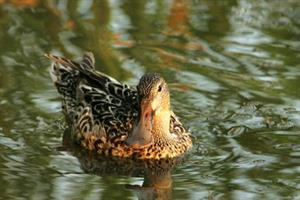 In terms of overall success, other duck species have fared even better. Gadwall ducks, for example, have increased 96 percent over the span of the survey to reach a 2012 population estimate of 3.6 million. Northern shoveler populations are estimated to be around 5 million birds, indicating an impressive 111-percent increase since the duck survey began. Redhead populations were estimated at more than 1 million birds, an 89-percent increase throughout the duration of the survey.
In terms of overall success, other duck species have fared even better. Gadwall ducks, for example, have increased 96 percent over the span of the survey to reach a 2012 population estimate of 3.6 million. Northern shoveler populations are estimated to be around 5 million birds, indicating an impressive 111-percent increase since the duck survey began. Redhead populations were estimated at more than 1 million birds, an 89-percent increase throughout the duration of the survey.
These are impressive numbers and a clear indicator that conservation efforts are proving successful. Increases occurred despite lower-than-average moisture levels across the southern portion of the survey area and losses of habitat to agriculture and urban sprawl. When viewed as a group, duck populations are showing positive trends.
However, as with any survey, the population as a whole does not give an accurate picture of each individual species. It is essential not to let the good news overshadow the work that remains to be done for species that have not fared well to date.
Losers
Despite increases in the populations of many duck species, other species have declined over the course of the breeding population survey, including wigeon, pintails, and scaup.
Different duck species fill different niches in environments across North America, so the loss of any one species could have broad ecological impacts. Further, it is critical to ensure that struggling species are not negatively affected by conservation efforts. If management goals inadvertently favor one species over another, then we could be damaging waterfowl species and natural resource health by virtue of our own efforts. Perhaps most importantly, the duck species that are struggling might hint at larger problems, such as habitat loss, disease, or the effects of climate change. By determining which species have not fared well, scientists may be able to establish conservation initiatives aimed directly at these struggling species.
For assistance in interpreting the results of the duck survey, I turned to Phil Thorpe, deputy chief of the Branch of Migratory Bird Surveys, U.S. Fish and Wildlife Service. Thorpe, a biologist and pilot, conducts aerial migratory bird surveys, which are essential to our understanding of waterfowl population trends.
Certain species stood out in the 1955-2012 survey because they had slow growth, they were below their long-term averages, or there was a lack of significant data to accurately assess the relative health of the population. Of all the species that Thorpe deemed to be “losers” with regard to the long-term study, similarities began to emerge.
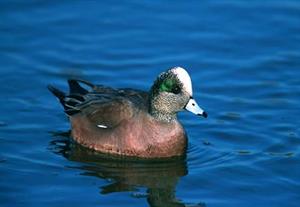 “Our population estimates for American wigeon have been below North American Waterfowl Management Plan goals since the early 1980s,” says Thorpe. These management plans are established by U.S. and Canadian representatives (including U.S. Fish and Wildlife Service staff) to form a measurable population goal for each species of waterfowl based on factors such as reproductive rate, offspring survival, and initial population figures. American wigeon populations are currently 17 percent below their long-term average and approximately 45 percent below peak years in the early 1960’s.
“Our population estimates for American wigeon have been below North American Waterfowl Management Plan goals since the early 1980s,” says Thorpe. These management plans are established by U.S. and Canadian representatives (including U.S. Fish and Wildlife Service staff) to form a measurable population goal for each species of waterfowl based on factors such as reproductive rate, offspring survival, and initial population figures. American wigeon populations are currently 17 percent below their long-term average and approximately 45 percent below peak years in the early 1960’s.
Northern pintails are also below their long-term average and have been below the North American Waterfowl Management Plan goal since the mid-1970s, Thorpe says. In 2012, pintails numbers dropped 22 percent below the 2011 estimate and 14 percent below the long-term average — despite conservation efforts that have proven effective for other species.
Scaup populations have increased over the past seven years from less than four million birds in 2005 to more than five million in the 2012 survey. However, these figures are far below 1970-1985 levels, when scaup populations were frequently above eight million. Scaup populations today are similar to their long-term average but 35 percent below peak population figures. The decline in scaup numbers from 1985 to 2005 is alarming, and although that trend seems to have been reversed, this species is going to require special attention to ensure numbers remain stable.
These “loser” duck species have been carefully monitored, and data regarding their populations have been assessed since 1955. There is another group of ducks, however, for which little reliable data even exists.
“We know very little about many of the sea ducks (e.g., eiders, scoters), and population surveys on them are weak,” says Thorpe. “Experimental wintering surveys off the Atlantic coast are promising for getting better population estimates, but more work on this group of ducks is needed on both the wintering and breeding grounds.” This lack of information doesn’t necessarily mean that sea duck populations are declining or are in peril. However, a lack of data makes accurate assessment of the health of the population much more difficult in the long term.
“Models are very data hungry, so you need to feed the models lots of data annually to get meaningful results.” Thorpe says. With sea duck species, such data does not currently exist. What scientists have done in the past is take known data from more common species like mallards and apply it to other duck populations. There is a risk involved in this, however; different duck species have different breeding patterns, clutch sizes, nesting sites, and a variety of other ecological variables that make it difficult to apply patterns from one species to another and expect similar results.
The varying population trends in the study are a clear indicator that duck species can’t all be managed the same way. But long-term studies like the Fish and Wildlife Service’s breeding population survey offers biologists a tremendous amount of data to analyze in an effort to help declining species improve their population numbers.
Implications
When Thorpe examines the results of the 2012 survey, he does see a clear trend. Many of the species falling below North American Waterfowl Management Plan goal numbers nest in a largely overlooked and undermanaged area: Boreal forest regions.
“The boreal forest is being developed at an alarming rate,” says Thorpe. “Development of tar sands in northern Alberta, diamond mines and other precious metals, and hydroelectric development all are creating disturbances and fragmentation across the boreal forest and tundra. Loss of habitat is the biggest challenge for waterfowl managers as well as wildlife managers.”
Boreal forests are composed primarily of coniferous (cone-bearing) trees and lie just south of the tundra in the northern hemisphere. The loss of boreal forest habitat, along with the yet undetermined effects of climate change in the region, may present a serious threat for some waterfowl populations. It is important that the problems with waterfowl species that nest in these boreal forests aren’t ignored by hunters, who might see the overall increase in waterfowl populations and assume the work is done.
“Continued development in the boreal forest and the effects of climate change on breeding and wintering habitat are real,” says Thorpe. “Hydroelectric development in eastern Canada has already altered breeding habitat, and development in the boreal forests of Canada will only increase as climate change extends the ice-free period, allowing easier human access to the boreal forest and the arctic tundra.”
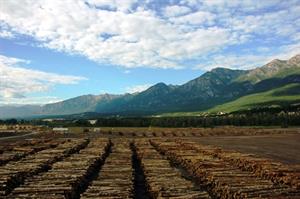 The loss of boreal forest habitat doesn’t only affect species that are common nesters in that region. Other species may inadvertently suffer losses. “Northern pintails are specialists. They like short- to mixed-grass prairie and shallow wetlands,” Thorpe explains. “When these conditions aren’t present on the breeding grounds because of drought, they overfly the prairies and go into the boreal forest and on up to Alaska. While this is somewhat of a flexible lifestyle — better than remaining in the prairies and deferring breeding — they use up protein reserves, and production is lower in these over-flight years.”
The loss of boreal forest habitat doesn’t only affect species that are common nesters in that region. Other species may inadvertently suffer losses. “Northern pintails are specialists. They like short- to mixed-grass prairie and shallow wetlands,” Thorpe explains. “When these conditions aren’t present on the breeding grounds because of drought, they overfly the prairies and go into the boreal forest and on up to Alaska. While this is somewhat of a flexible lifestyle — better than remaining in the prairies and deferring breeding — they use up protein reserves, and production is lower in these over-flight years.”
Pintails are, under normal conditions, prairie pothole nesters. Prairie pothole regions in the Great Plains states of Iowa, Minnesota, North and South Dakota, and Montana as well as south-central Canada provide a great deal of waterfowl nesting habitat in the form of shallow “potholes” that hold water for much of the year. However, in many areas, more than 80 percent of the prairie pothole land has been drained for development or agricultural purposes, and this loss of prairie potholes combined with a loss of over-flight boreal forest habitat may be causing declines in the overall number of Northern pintails.
Scaup populations (both greater and lesser scaup) may be suffering from the transmission of pollutants through food sources, particularly invasive zebra mussels. Zebra mussels are filter-feeding bivalves. In areas where pollution is a problem — particularly along the Atlantic coast — scaup feed on mussels contaminated by runoff and industrial waste. Indications are that these toxic pollutants may be reducing scaup breeding populations and causing a decrease in overall scaup numbers.
Another area of concern is developing overall management plans based on single species for which abundant data available. Even though significant data exists regarding mallards and other common species, management techniques that prove successful for one species may not be universally applicable to all wildfowl populations.
“Our ability to manage other duck species using models quickly declines from what we can do with the mallard since our sample sizes for survival and reproduction and our banding numbers (i.e., banding returns) all are much smaller than what we annually get from mallards,” Thorpe says. “We apply much of what we know about mallards to other species, which has kept all duck populations at healthy levels, but this may not be the optimal treatment for each individual species of duck. We are starting to shift resources to species that we know less about, like sea ducks.”
Wings of Hope
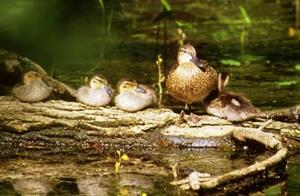 For the most part, North American waterfowl management strategies have been successful. Most species have increased dramatically since 1955, and some have far exceeded their long-term averages. But for the sake of the American wigeon, Northern pintail, and other ducks that have not fared so well — and the environments of which they are a vital part — it is critical that conservation teams continue refining management practices and work to improve and conserve habitat.
For the most part, North American waterfowl management strategies have been successful. Most species have increased dramatically since 1955, and some have far exceeded their long-term averages. But for the sake of the American wigeon, Northern pintail, and other ducks that have not fared so well — and the environments of which they are a vital part — it is critical that conservation teams continue refining management practices and work to improve and conserve habitat.
With more data, sound management techniques, and improved conservation efforts, we may be able to improve populations of waterfowl species that have been overlooked — and move them into the “winners” circle.